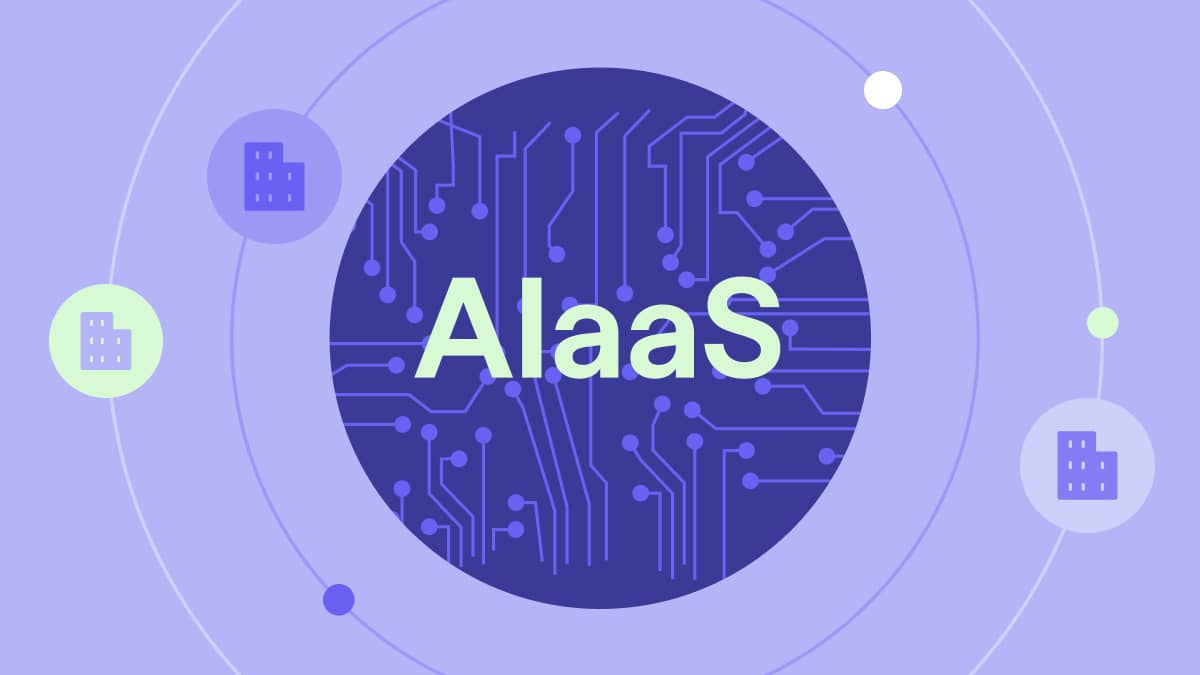Artificial intelligence and intelligent automation (AI and IA) are closely related terms that overlap in many ways.
Understanding the subtle yet important differences will help you use these powerful technologies effectively in your business. You’ll also be able to have more productive conversations with peers, colleagues and clients.
In this article, you’ll find simple definitions for artificial intelligence, intelligent automation and another closely related, often-confused term: intelligence augmentation.
We’ll compare AI vs. IA and explore six helpful sales applications so you can improve and streamline your operations.
What is AI?
Artificial intelligence (AI) simulates human intelligence. AI technology uses machine learning algorithms to perform tasks that typically demand human thought – like learning, problem-solving and decision-making.
AI essentially enables computers to mimic thinking. Machines learn and adapt from data input without needing direct programming for each task (a process called “deep learning”).
For example, AI tools can analyze large volumes of customer data to find patterns and trends far quicker and more accurately than a human being. In this instance, the customer data is the input.
AI is a broad technological concept that encompasses various elements, including the following:
Conversational AI enables machines to engage in natural language conversations with users, often through chatbots or virtual assistants (e.g., Amazon’s Alexa or Apple’s Siri)
Generative AI can create new content, like text, audio or images, based on patterns learned from existing data
Computer vision uses algorithms to interpret and analyze visual information from images or videos (e.g., facial recognition and object detection)
Machine learning is when computers learn from data and make decisions or predictions without human programming (e.g., personalized recommendations)
Natural language processing (NLP) allows computers to understand, interpret and generate human language. Applications include speech recognition, language translation and text summarization
Each subset of AI technology offers unique capabilities and applications we’re still learning about. Collectively, they’re driving growth and digital transformation for businesses across industries, including in sales and marketing.
Research supports AI’s growing impact on businesses. In 2023, 90% of commercial leaders reportedly anticipated using generative AI solutions “often” in the following two years.
In other words, companies that don’t get on board with AI now risk falling behind their competitors.
What is IA?
Intelligent automation (IA) combines AI with automation technologies to enhance business processes and decision-making.
Using AI algorithms to automate workflows and routine tasks reduces manual effort and boosts productivity. The results are more time spent with customers (potentially leading to sales growth) and improved operational efficiency (i.e., more profit).
In sales, AI-driven tools can automate administrative tasks such as:
Data entry
Report generation
Big data analysis
Task management
For example, Pipedrive’s website AI Chatbot (part of the LeadBooster add-on) can collect information from website visitors and pass it on to your customer relationship management (CRM) system – all without human intervention.

Thanks to this intelligently automated data sourcing, your sales reps can focus on more nuanced tasks like building sales strategies and personalizing customer experiences.
Crush your manual admin with this sales automation guide
AI vs. IA: What’s the difference?
The main differences between AI and IA are their focuses and capabilities. Essentially:
AI systems mimic human intelligence to perform tasks autonomously
IA systems combine AI and automation technologies to enhance human performance, improve efficiency and facilitate decision-making
In sales, an AI tool like ChatGPT can analyze customer datasets to predict buying behaviors. IA could automate lead qualification processes to let sales professionals prioritize their efforts more effectively.
Here’s a simple AI vs. IA comparison chart showing the key differences.
Artificial intelligence (AI) | Intelligent automation (IA) |
Focus: | Focus: |
Objective: | Objective:
Streamline processes and enhance efficiency |
Functionality: | Functionality: |
Examples: | Examples: |
Goal: | Goal: |
A quick word on intelligence augmentation
To add further confusion, some people use IA to mean intelligence augmentation rather than intelligent automation.
While the two terms are similar, intelligence augmentation has a broader meaning. It describes any use of technology to enhance human intelligence and capabilities, not just artificial intelligence.
That said, intelligence augmentation still focuses on using technology to improve decision-making processes and optimize task performance – just like intelligent automation.
Pipedrive’s reports and dashboards are examples of augmented intelligence. They use computing power to turn sales performance data into usable insights.

In other words, these reports and dashboards complement (i.e., augment) human users’ cognitive functions (i.e., intelligence).
AI and IA in sales: 6 helpful use cases
Both AI and intelligence automation are proven to make sales organizations more successful.
McKinsey found that companies that invest in AI are seeing a 3–15% revenue growth and a 10–20% boost in sales ROI.
Per Pipedrive’s State of Sales report 2021/22, sales leaders who adopted technology and automated tasks were 16% more likely to hit their sales targets.
Here are six straightforward ways to use AI and IA in sales to reap similar rewards.
1. AI Sales Assistant
Pipedrive’s Sales Assistant analyzes your contacts, emails and deals using AI. It then provides recommendations to help you:
Streamline the sales process
Deliver better customer experiences
Increase sales revenue
For instance, sales leaders and departments can track email opens to learn about campaign performance. The Assistant also provides sales activity reminders and personalized productivity tips.
Here’s an example of AI Sales Assistant forecasting the chance of closing a deal and suggesting productive next steps.

Here, the tool uses what it learned from patterns in existing data to recommend prospect email outreach. It means the sales rep has less thinking to do and can move on with progressing the deal.
Sales Assistant’s application of AI ultimately helps busy salespeople stay on track, focusing on the activities most likely to improve team performance.
2. Lead nurturing with chatbots
Chatbots using conversational AI can engage website visitors in real time without human intervention.
They enable busy sales teams to nurture leads, even outside of regular working hours, by automatically:
Initiating conversations
Answering common questions about products and services
Qualifying prospects based on predefined criteria
As a result, salespeople can quickly identify high-potential leads and have more time to follow up on them. Meanwhile, prospects receive valuable information and support at all buyer journey stages, even when a rep isn’t available.
Here’s an example of Reliability Maintenance Solutions (RMS) using Pipedrive’s Chatbot feature to nurture leads.

Visitors to the RMS website can interact with the business at any time and move closer to purchasing by scheduling a meeting – all without the involvement of RMS sales reps. Chatbot enables a smoother, more satisfying customer journey with minimal effort.
3. Super-fast content creation
Sales teams can use generative AI tools to speed up content creation.
With the right prompts, tools like Gemini and Claude will generate ideas, outlines and copy for sales enablement assets such as:
Product brochures
Sales demo plans
Contracts
Salespeople can use the above materials throughout the sales cycle to deliver helpful information, build trust and manage leads toward conversion.
We asked Google’s Gemini to provide a simple cold email template for a healthcare equipment provider. It gave the following response.

While the result isn’t perfect, the AI-generated text provides a helpful foundation that any salesperson could easily tweak. Google even offers recommendations, such as featuring relevant equipment and a success story.
Note: Generative AI tools rely on algorithms and historical data (e.g., existing websites), so their content can be unoriginal or even inaccurate. To avoid wasting time or risking your business’s reputation, give detailed prompts and edit outputs thoroughly before using them in your sales efforts.
4. General workflow automation
Intelligent workflow automation solutions perform repetitive and laborious tasks to take the strain off salespeople. Sales teams can then focus on more intensive or creative work instead.
Aside from streamlining workflows to boost team productivity, automation tools also minimize human error across the sales process.
Take data entry, a critical sales workflow for most businesses, as an example.
If you manually record data in a spreadsheet, the process is slow and you could easily mistype a lead’s name or contact details.
However, using a CRM, or AI CRM, with workflow automation capabilities to collect and log data into customer profiles helps you speed things up and eliminate errors.
Workflow automation tools can help with many daily sales tasks, including:
Email sequences
Appointment scheduling
Follow-up emails and reminders
Proposal generation
Contract management
Sales forecasting
Pipedrive’s Automations feature lets you set up flows and triggered events, but not only. You can even automate email campaigns, lead scoring and assignment, revenue forecasting and more.
Eliminating manual work across the sales process ultimately helps your team get more done in less time, shortening the sales cycle and increasing revenue.
5. Turning data into actionable insights
Intelligent automation tools can pull your sales performance data into intuitive reports, dashboards and pipeline visualizations – turning raw numbers into actionable insights.
With your most valuable sales metrics (i.e., key performance indicators or KPIs) clearly presented with minimal effort, your team can make informed decisions faster.
Take Pipedrive’s Insights feature as an IA example.

If, say, your end-of-month report shows that leads are going cold late in the sales cycle, you’ll know to work on the team’s negotiation skills. Alternatively, you could start a sales promotion to boost wins.
However, reporting isn’t all about reflection.
Pipedrive’s intelligent sales forecasting features help you accurately predict incoming revenue so you can prioritize deals and allocate resources to hit your sales goals.
6. Smoother email campaigns
IA tools can simplify email marketing by automating list segmentation, scheduling and personalization.
For example, some CRMs and email marketing software can analyze customer data to organize email lists based on demographics, interests or past behavior. They can then automatically send personalized email messages to each segment at the right time for maximum engagement.
Email automation’s growing popularity is a sign of its effectiveness.
A 2023 Litmus paper found that 55% of survey respondents are automating onboarding and post-chase emails. Around one-third use automation for re-engagement (32%) and reactivation (31%). Plus, 48% of respondents want to automate more of their email program in the next year.
What are your marketing priorities in the next 12 months?
Source: The 2023 state of email workflows report.
By automating email campaigns, sales teams can also target audiences more effectively, deliver relevant content and nurture leads. The results are higher open and click-through rates, engagement and conversions.
IA vs. AI FAQs
Final thoughts
As artificial intelligence and intelligent automation expand and evolve, their advantages will only improve.
With a history of leveraging AI and IA to eliminate admin, Pipedrive continues to help sales teams capitalize on both technologies.
Sign up for a free 14-day trial to supercharge your sales team with AI and automation.







